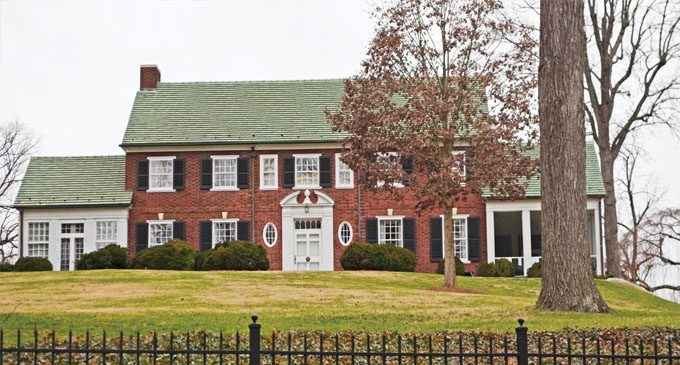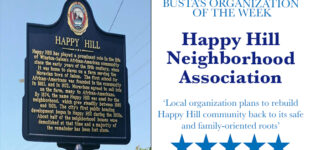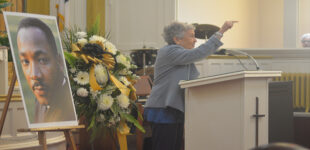City Council calls for more diversity in historic landmarks
The historic Gilmer house in Washington Park is the city’s newest official historic landmark.

Photo by Todd Luck
BY TODD LUCK
THE CHRONICLE
The approval of the latest local landmark prompted some City Council members to call for more inclusion in the historic program during the council’s latest meeting.
Last week, the council unanimously approved a local landmark designation for a house originally owned by John L. Gilmer at 605 W. Cascade Ave. in Washington Park. Gilmer moved to Winston-Salem in 1893 where he started or helped develop a number of businesses. The house, now owned by Richard Sickles, joins 133 other local landmarks that are eligible for a 50 percent property tax deferral, but now must maintain its historic character and any changes to the property will need approval from the county’s Historic Resource Commission, which is an appointed citizen committee.
“It is an important part of the Washington Park area, it is an important part of the history of Winston-Salem,” said City Council Member John Larson, who represents the South Ward where the house is at.
City Council Member D.D. Adams voted for the measure on Tuesday, Jan. 3, but used it as an opportunity to lament the lack of local African-American landmarks.
“We don’t have much of that left anymore,” said Adams “When rehabilitation or Model Cities or urban renewal came through, most of our history was taken with it.”
Adams said there was little left to denote the prominent families that shaped the city’s black community. She said that the city needs to work to find a way preserve its black history for future generations.
Other council members echoed those thoughts, including Vivian Burke, James Taylor and Jeff MacIntosh, who suggested the house of the late Winston-Salem State University Basketball Coach Clarence “Big House” Gaines is a good candidate for a landmark. Taylor and Council Member Robert Clark also said they’d like to see a more uniform standard that requires a public benefit from the landmark.
“We seem to have a lottery every now and then and somebody wins,” said Clark about the way landmarks are chosen.
The Gilmer house is already included in tours of Washington Park, which Clark said led him to support it as a landmark, as did its importance as an “anchor” for the neighborhood.
To become a local landmark in Forsyth County, a property should be at least 50 years old, have special historical significance and have a strong degree of its original integrity intact. Owners of the property have to fill out an application, which costs $50, which is reviewed by the Historic Recourse Commission and has to be approved by the local governing body, which for Winston-Salem residents is the City Council.
There are already several locally designated African-American landmarks, including the house and brickyard of George Black, the Odd Fellows Cemetery, and historic black churches Lloyd Presbyterian Church and St. Paul United Methodist Church in Kernersville.
Michelle McCullough, historic resources officer, said that while many homes may qualify to become a landmark, not everyone wants to do so because of the costs of using historically accurate materials and restrictions it puts on upkeep of the building. The local landmark designation is a permanent one, so future owners of the property have to abide by it and each property owner’s would have to apply for the tax break. In the case of the Gilmer house, Sickles’ son Morgan told the city council his father was interested in making sure the house was preserved after he’s gone and not in the tax credit.
The landmark program is separate from the National Register of Deeds, which the Washington Park neighborhood is already on. It also different from the state’s historic tax credit, which gives historic properties tax credit on a percentage of their restoration costs. It’s also separate from the Historic Resource Commission’s Historic Marker Program, which is often used to denote historic places that no longer exist like 14th Street Elementary School, a historic African- American school that once stood on the corner of 14th Street and Cameron Avenue that’ll be getting a marker later this year.















